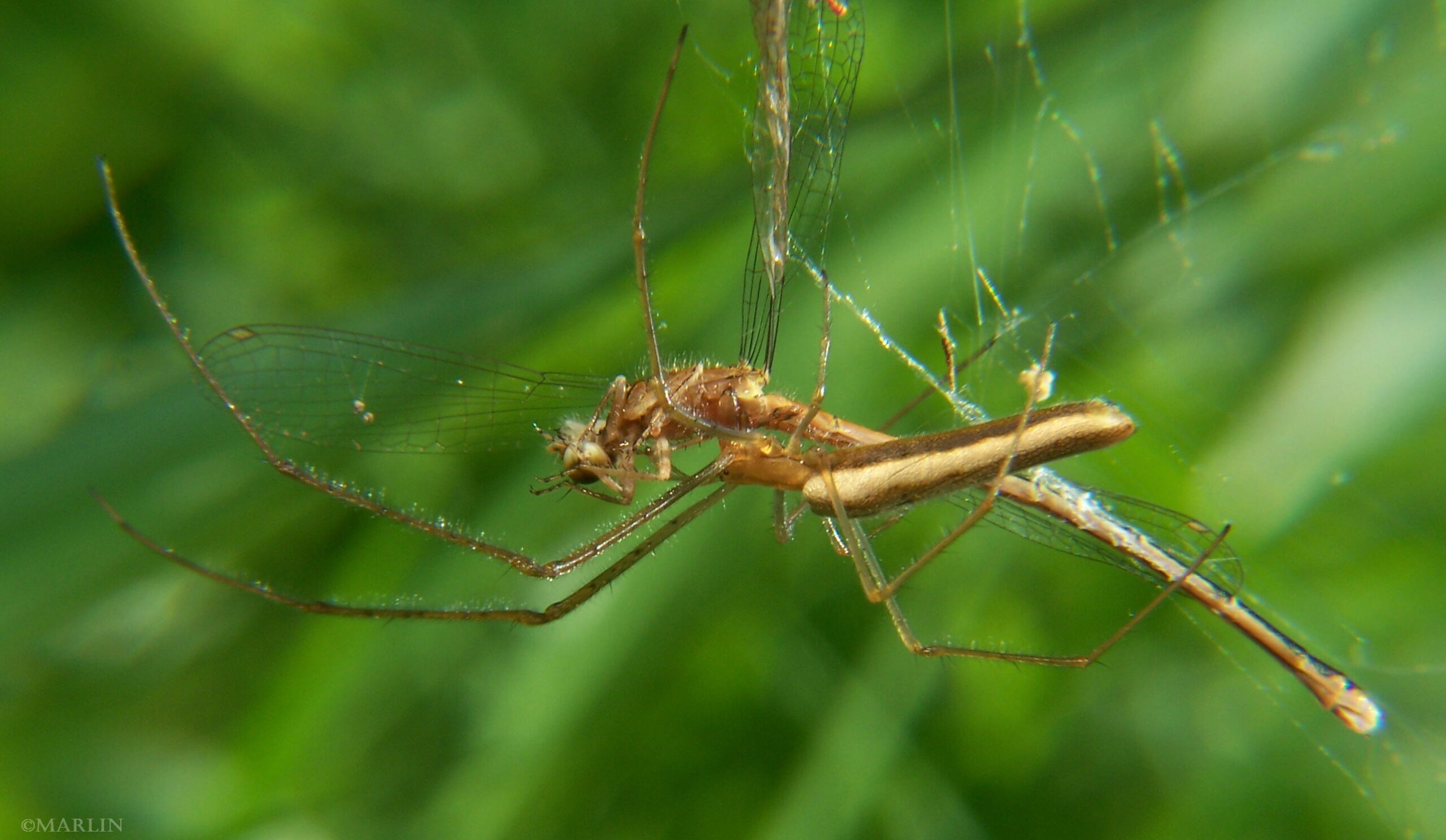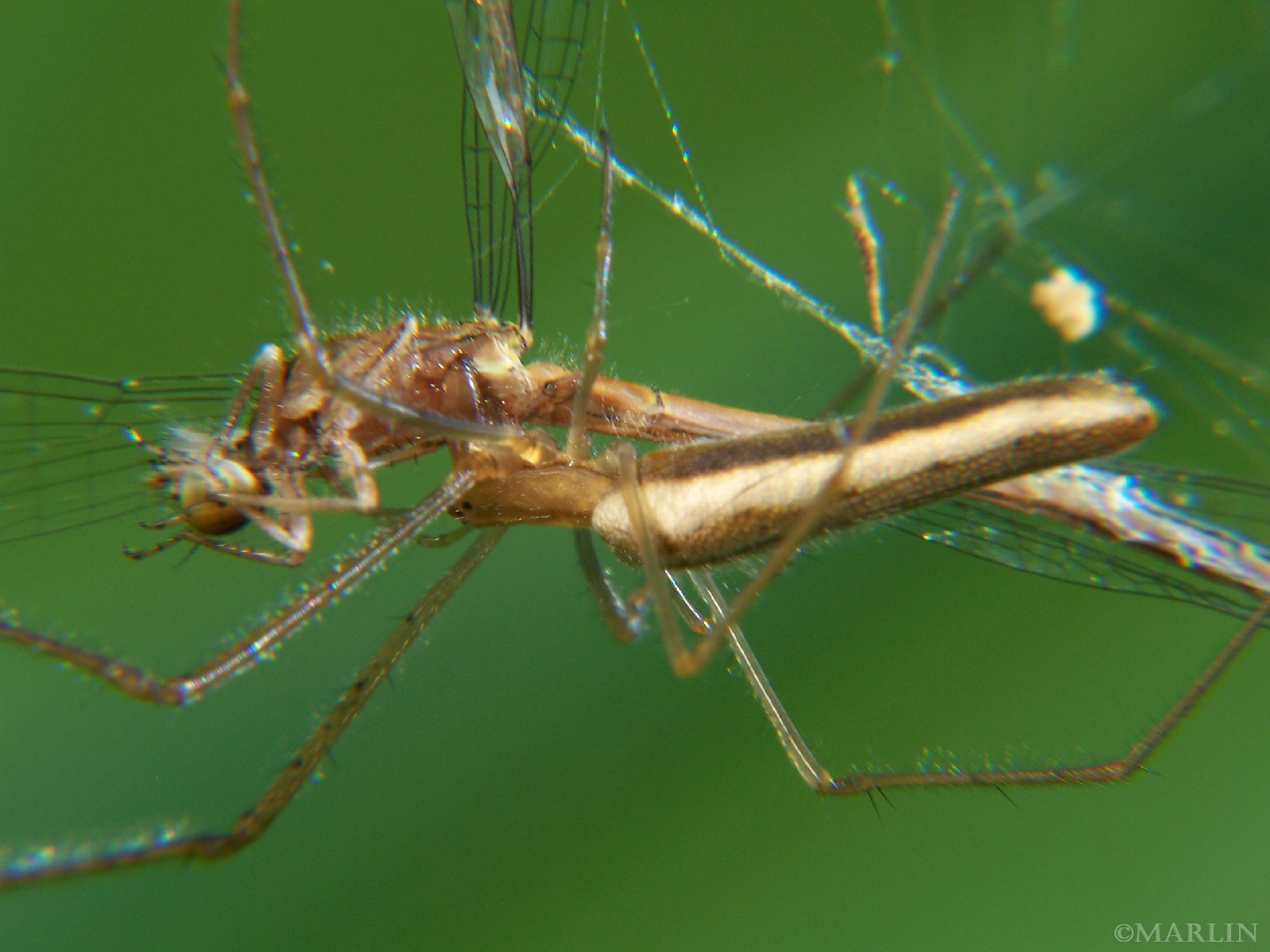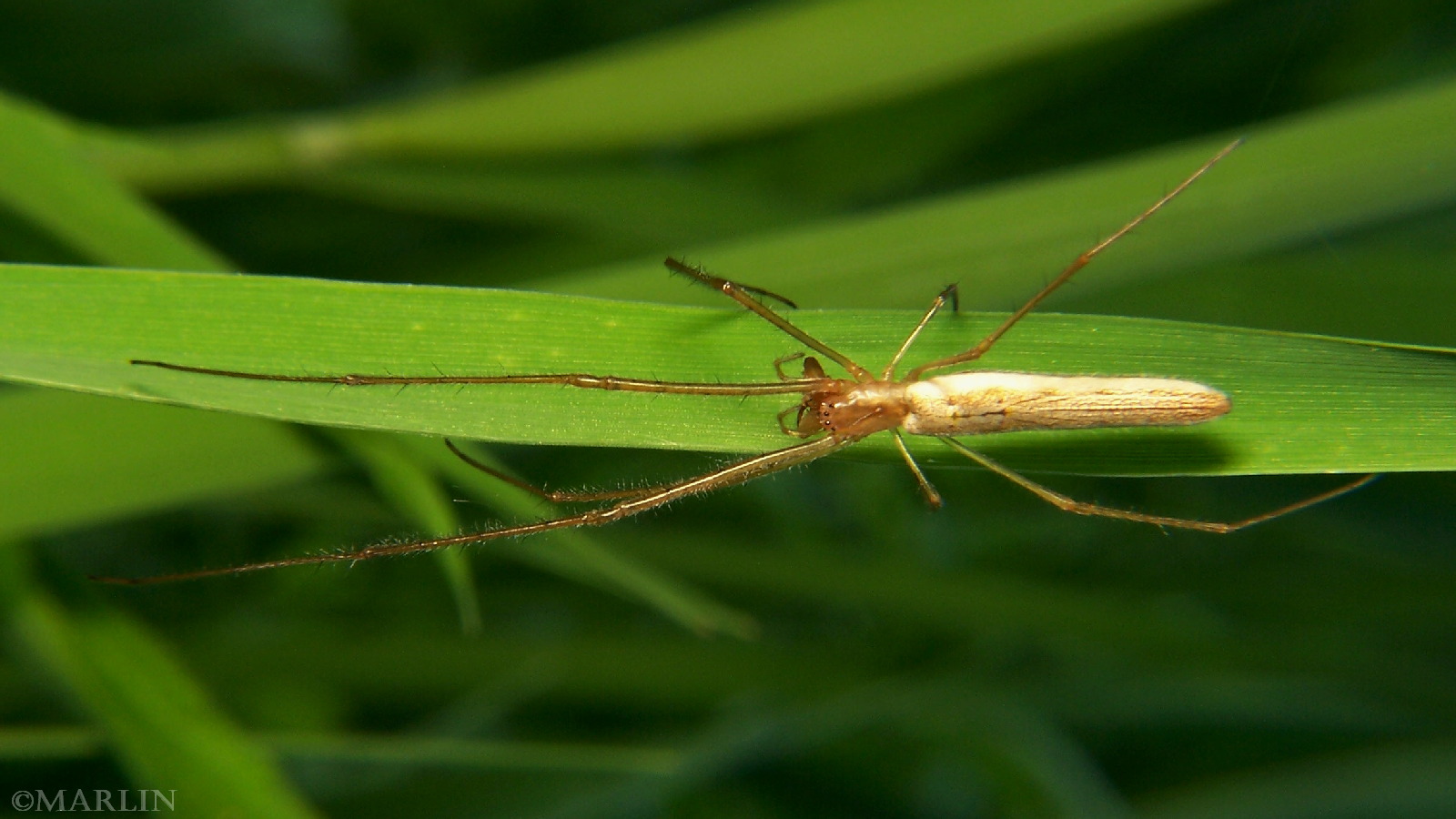Long-Jawed Orb Weaver- Tetragnatha straminea
 This lovely female spider has managed to capture a damselfly for dinner. Many species in this family leave a hole in the center of their orb web, beside which they wait, and through which they can dart quickly to service clients on either side.
This lovely female spider has managed to capture a damselfly for dinner. Many species in this family leave a hole in the center of their orb web, beside which they wait, and through which they can dart quickly to service clients on either side.
All spiders are predacious and carnivorous. They subsist on the bodily fluids and chewed up live insects they have paralyzed with their venom. Their method of feeding is pretty much the same as ours, except their “teeth” and digestive processes are external. The strong chelicerae and the sharp edges of the endites are used to crush and pulverize the prey, all the while bathing the resultant wreckage in copious quantities of digestive fluid from the maxillary glands. The resultant broth is vacuumed up through the mouth and esophagus by means of powerful muscles that cause expansion of the stomach and gut. It is thought spiders do not ingest solid food, but only predigested liquids. Some hard-bodied insects like beetles are injected with digestive juice through a small hole, and the whole outer cuticle is discarded afterwards [4].
 Many species of long-jaws stand at the side of their web, keeping their legs on a sounding line in order to detect vibrations that signal the arrival of prey. They are very adept at dropping out of sight at the slightest disturbance, or carefully camouflaging themselves, hiding in plain sight lined up with the long axis of a twig or grass blade.
Many species of long-jaws stand at the side of their web, keeping their legs on a sounding line in order to detect vibrations that signal the arrival of prey. They are very adept at dropping out of sight at the slightest disturbance, or carefully camouflaging themselves, hiding in plain sight lined up with the long axis of a twig or grass blade.
Larger spiders in this family are often found near water, especially moving water of rivers and streams. They build orb webs in the horizontal plane, often just inches above the surface of water where they can catch emerging insects like midges, mayflies, and stoneflies. Smaller species build webs in fields and meadows, often in trees and shrubs. They construct long-distance network of lines and lattices connecting plants, and they can travel rapidly along this nearly invisible web to capture insects that were otherwise out of reach. Many different brands of spiders use these “catwalks” in moving about their territory.
Orb weaver spider captures a damselfly. Live adult spider photographed at DuPage County, Illinois.
References
- Bugguide.net, Tetragnathidae
- Arthur V. Evans, National Wildlife Federation Field Guide to Insects and Spiders & Related Species of North America (Sterling, 2007).
- Bruce Marlin, Bugguide.net, “Tetragnatha straminea“
- William J. Gertsch, PhD. “American Spiders“
Spiders Main | Spiders Index | Orb Weavers | Jumping Spiders | Nursery Web
Tree Encyclopedia / North American Insects & Spiders is dedicated to providing family-friendly educational
resources for our friends around the world through large images and macro photographs of flora and fauna.


